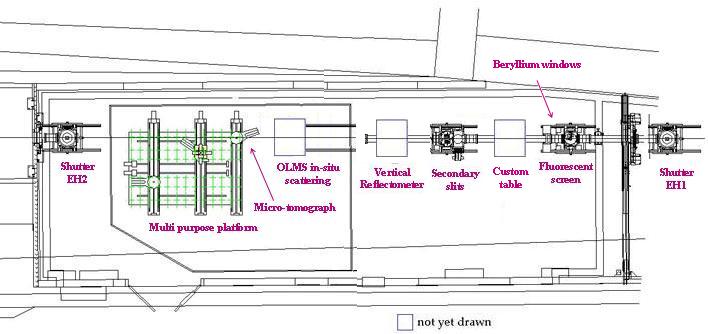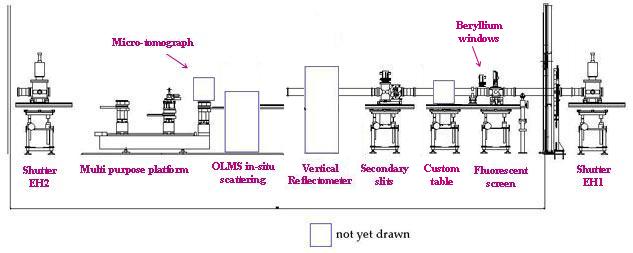- Home
- Users & Science
- Find a beamline
- Structure of materials
- Industrial imaging BM05
- Beamline Guide
- Experimental Hutch 1
Experimental Hutch 1
The layout of Experimental Hutch 1 (EH1, 12 m long x 3.2 m width) starts with a monochromatic beam viewer (not yet implemented) that can also be used to monitor the white beam when EH1 and EH2 are operating in this mode. The next element is the secondary slits station. Then we find the new station for online reflectivity and scattering (OLRS), that can be moved in and out of the beam, followed by an optical granite platform, built to accommodate custom setups. The rest of the hutch is occupied by the multi-purpose platform (MPP), workhorse of the beamline. The last component of this hutch combines a shutter and a photon absorber to control the introduction of the beam into a shielded tunne and the following hutch EH2. Most of the detector activities, including industrial activities, are taking place on the MPP. One recurrent example of geometry used by XOG involves a precise piezo stage mounted on the first tower, a CRL-based sample mounted on the 2nd tower (4 degrees of freedom) and a 2D camera mounted on the 3rd tower (3 degrees of freedom). Another recurrent geometry used by DU involves the 1sttower where a set of CRLs are mounted (4 degrees of freedom needed) and the 2nd tower, placed at a maximum distance of 1.3 m to mount the detector element to be characterized in the focal plane of the CRLs (7 degrees of freedom needed).
Top View
Click on the different parts of the plan to go to the relevant page

Side view
Click on the different parts of the plan to go to the relevant page




